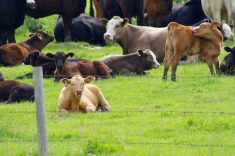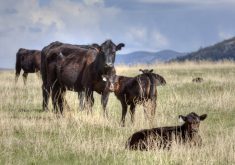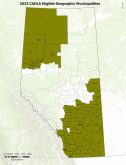The markets can be a roller-coaster, but one thing is for sure — the Canadian cattle herd is not expanding.

“Heifer retention numbers are not enough to drive any expansion across Canada,” Brian Perillat, manager/senior analyst with Canfax said at the recent Canadian Beef Industry Conference.
Fewer cattle are being shipped south of the border but premium prices here have seen Canadian slaughter go up by 16 per cent, he said.
“Local demand has been fairly strong for these cows and that’s what’s driving the cow market,” he said.
Last month, the Canadian herd had the biggest weekly slaughter number in seven years. That’s partially due to the addition of Harmony Beef in Balzac.
“Despite our cow herd numbers being flat all the time, our slaughter numbers and our plant utilization rates have been very positive and well used,” said Perillat.
Read Also

Horns aren’t unlocking anytime soon on livestock transport standards
Standards good enough meet the definition of “humane” animal transportation still vary widely between what what industry wants, what animal rights advocates want and, between the two, what federal regulators decide is good enough.
The packing industry is enjoying good margins, and its demand for cattle is positive for the entire industry.
“It’s encouraging them to slaughter a lot of cattle and help work through the supplies,” he said. “They really do support the market.”
Even though slaughter is up substantially, beef production only increased by four per cent. That’s because average carcass weights have been as much as 40 pounds less than a year ago, he said. Rising carcass weights have concerned many industry watchers and Perillat noted “a lot of those carcass weights are in fatty trim products — there’s not a lot of value.”
Prices have also been swinging widely and there’s been a $700-per-cow spread between high and low prices this year, he said.
“And I’m not completely sure it’s at max level yet,” said Perillat.
Price rallies are nice but also present a challenge.
“There is some opportunity there, but when you get too caught up in buying some of these high-priced calves again, when the market turns, it’s a bit of a risk,” he said.
Still, prices are historically strong, and things are fairly positive overall.
Regional differences
Price volatility has also varied by region. Ontario prices are usually stronger than Alberta’s by a few dollars but earlier this year, Alberta had the strongest prices in North America.
“Alberta prices were $20 to $25 a hundredweight above Ontario,” said Perillat.
Culled cow prices have come down quite a bit since peaking in early June and exports have been fairly strong — although the majority of Canadian cattle are slaughtered at home.
This summer’s dry conditions haven’t resulted in big volumes of cattle coming to slaughter.
“I think there’s a lot of carry-over grass and pretty good subsoil moisture coming into this year,” said Perillat. “We haven’t seen a flush of cows being liquidated by any means, and that’s despite the fact that we are seeing these prices coming down.”
The feedlot sector has had to adjust to margin swings, but has continued to be profitable, he said. Fed cattle prices have come down but despite this, feedlots are still doing well, which is supporting the feeder markets.
But cow-calf producers have been the big winners for a few years now, and have been more consistently profitable. Hay and feed costs will be up this year, but most of that will be factored into next year’s calf prices, said Perillat.
















